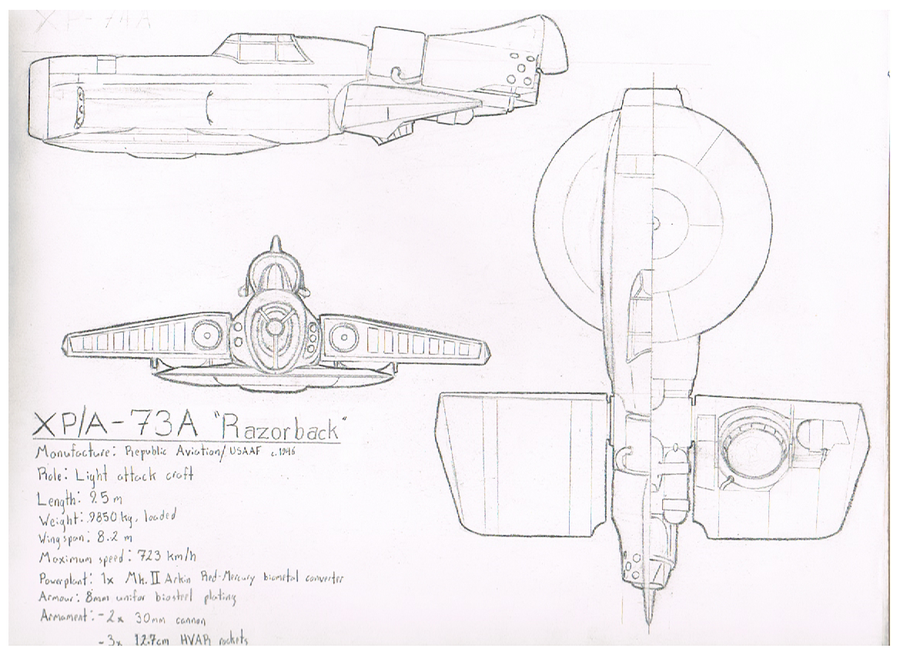The Truman Era
When it became clear to the Germans in 1943 that they would be unable to prevent the Allies from overrunning the Fatherland, they set in motion the most grandiose retreat action in human history. With an entire war serving as a rear-guard, they expanded their far-post in New Swabia, Antarctica into a full military installation replete with barracks, training grounds, hangars, R&D sections, and production facilities. U-boats would ferry supplies to the base, taking the long way around the Allied patrols and surfacing inside the compound after travelling under the icy continent. Towards the end of the Great War, the German scientific community had discovered a material hailing from meteorites. Normally the entire object would burn up in the atmosphere, but in this case a part of it remained, unscathed even. After some years of testing, they began to call it Gedächtnismetall; memory metal, after its affinity for returning to a pre-set shape. By 1941, the Germans had become so familiar with it that they were able to begin applying it to the manufacture of war materiel. By 1942, sightings of saucer-shaped objects in the sky moving with bizarre agility began to circulate among the Allied air forces. The Haunebu, as it was known to the Germans, was mass-produced in New Swabia and, come the end in 1945, was used to transport approximately 30,000 German personnel to the moon, where they would attempt to rebuild their fighting capabilities unmolested.
The US Army, during the final days of the Third Reich, found documents pointing to the existence of a German far-post in Antarctica. Following V.E. day, the United States arranged an expedition to the region to inform the personnel there of the War's end and receive their surrender; what they found was nothing short of amazing. While most of the base had been demolished by the fleeing Germans, the charred hulks of unfinished, almost alien aircraft and ground vehicles remained intact enough for the Americans to study with help from recovered documents; these same documents also hinted at where the Germans had gone and what they might be preparing for. The United States immediately put together a crash-course project to reverse engineer the technology to use it to repel the impending invasion. Using existing war-time vehicles as a starting point, they made a whole slew of modifications. Such modifications included the addition of Gedächtnismetall/steel alloy armour, retrofitting of protoype propulsion in place of tracks or props, and up-gunning due to the increased protective potential of the new armour inevitably to be used on German analogues. The Americans even rebuilt and re-tooled the factories at New Swabia to manufacture their new arsenal. By the time the Germans came in 1947, they were ready.
The Germans were unprepared for the challenges of space travel. Upon their exodus, they lost some 900 men to microparticle collisions in transit. When they came back, they lost a third of their force of 2,000 attack craft to radiation due to an untimely solar flare, and another third upon re-entry due to cracks and imperfections in their vehicles and US rocket artillery. The remaining force was massively under-strength when it touched down in Antarctica and was quickly overwhelmed by the new US prototype vehicles. The Germans once again retreated, but this time they were to be followed. By 1951, the United States had put in place the infrastructure to support a campaign on the Moon to annihilate the Third Reich. Using rockets, they would bring to the moon a strike group supported by a reserve of the rare material, now referred to as "biometal," and a portable manufacturing plant. The campaign was short and decisive: American forces surrounded and outgunned the now depleted ranks of the Reich. Their base was occupied and re-named "Eagle's Nest One" and would become the United States' permanent military residence on the moon.

The Germans had calculated that a symmetrical shape was necessary to maintain a stable gravity repulsion field, explaining the saucer-shape of their craft. The Americans had discovered during their reverse-engineering process that you could maintain a hovering capacity by using the V-thruster to support the back end of the vehicle while using a smaller, less power-intensive repulsion field to support the front. The test-bet for this design was to be a P-47 fuselage, of which the United States had many after having retired the aircraft in favour of the P-51. The engine compartment was gutted and used as a cooling radiator for the anti-gravity mechanism. The back end was hack-sawed off and in its place was fitted the gravity impeller and the plasma rocket V-thruster assembly. The external plating was replaced with a bio-steel alloy with each plate capable of evenly distributing impact damage within itself with roughly 80% efficiency. The eight .50 machine guns were replaced with two 30mm cannon and a set of three 12.7mm HVAR rocket mounts. The resulting XP-73 "Razorback" was used as a front-line skirmisher during the invasion and the subsequent Lunar campaign.